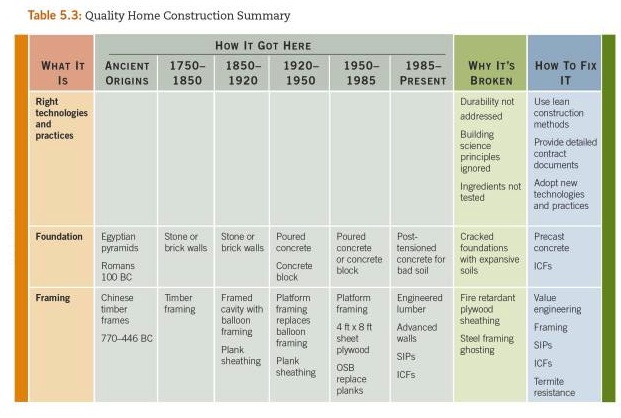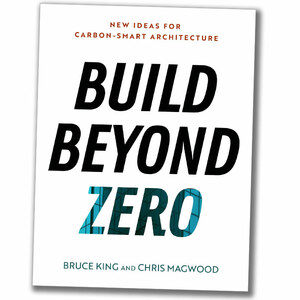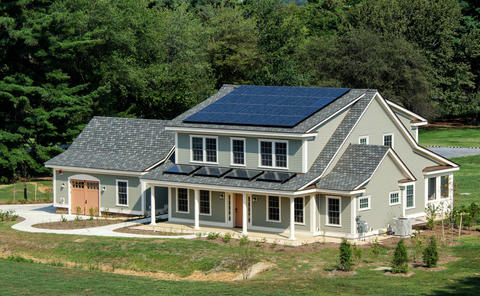
Sam Rashkin, until very recently the head of Energy Star for Homes, recently published Retooling The US Housing industry, a book of his opinions on, and suggestions of how to improve, the new home industry. The book is a fairly quick read with a great history of housing, and a good analysis of how the U.S. home building industry evolved to its current state.
The book starts off with a recap of the financial crisis, and the involvement of the home construction industry in that crisis. While this is not new information to most people in the construction industry, a couple of statistics clarify the depth of our problems: In 2006, housing accounting for 6.2% of GDP; in 2010, that figure dropped to 2.4%, and we are not likely to see a full recovery soon, if ever.
One major point with which I agree is that the long-promoted concept that everyone should own a home is no longer valid. Here’s a quote in the book from a 2010 Price Waterhouse study: “Not everybody can afford or should own a home.”
History class
Weekly Newsletter
Get building science and energy efficiency advice, plus special offers, in your inbox.
There are two separate history lessons in the book. The first covers the expansion of suburban development following WWII, encouraged by FHA and VA mortgage programs, that “discouraged renovation of existing housing stock, multifamily homes, and mixed use buildings.”
The second is a timeline of developments in construction, starting with the Egyptians, and moving quickly into a brief recap of several key eras described as:
• 1750 – 1850: Birth of a Nation
• 1850 – 1920: The Industrial Revolution
• 1920 – 1950: The Electric Grid Emerges
• 1950 – 1985: Age of Cheap Energy
• 1985 – Present: Building Science Arrives
Each of these sections includes descriptions of typical techniques of the era for Foundations, Framing, Materials, Insulation, Windows, Space Conditioning, Plumbing, and Electricity, providing a nice overview of the development of building technologies.
Lessons not learned
One key theme running through the book is best described by this section subtitle: “Key Lessons From Prominent Failures Have Not Been Learned.” In a parallel structure to the historical review sections, key failures and the lessons that should be learned from them in each building component are addressed.
These include hardboard siding, urea formaldehyde in insulation, missing window flashing, and polybutylene pipe. This is followed by another review of very specific materials and techniques for each building component that, when employed properly, will lead to high-performance homes.
The main takeaway is that builders need to invest in quality design and construction, which will result in high-performance homes. The big question is whether or not home builders will actually be willing to make these investments, or will they simply continue to do the same thing over and over again, make their money, and move on, rarely if ever worrying about how their homes perform over the long term?
How long a warranty?
Probably the most radical thing proposed in this book is the concept of builders providing a 30-year warranty on their homes. This isn’t quite as far-fetched as it might seem, as this extended warranty will require regular maintenance, quite like car warranties, which, if managed properly, can provide a steady income stream for businesses willing to take on this work.
The book wraps up with a section on selling high-performance homes; the section provides a good outline on how to make the case for them to the consumer. I am not, however, hopeful that there will be enough of a market transformation, particularly in our currently troubled economy, to move the home building industry fast enough to make an impact.
Thumbs up
I found the book a fast read, with enough interesting information to keep me engaged through most of it.
I am a little disappointed that our existing housing stock was not addressed at all, but that is clearly outside the scope of this book, and would probably fill a much larger volume. We can only hope that enough home builders will read the book and follow its recommendations as the industry begins to recover.
















3 Comments
What When Where Who Why How Much?
It turns out that WHERE is the most important question in sustainable homebuilding.
This book apparently ignores it.
http://www.washingtonpost.com/wp-dyn/content/article/2010/10/15/AR2010101505197.html
http://greenbuildingindenver.blogspot.com/2010/10/location-of-your-low-energy-house.html
Location is critical
Good point, Kevin, however I think it will be challenging to get any significant amount of volume building to occur in walkable and transit oriented locations. Greenfield development is just too cheap for most for profit business to pass up. Either enough market demand for homes in better locations, legislation that incentivizes it, or a combination will be required to make that big a change. Or, just wait until gasoline gets as expensive as it is in Europe and we'll likely see some pretty quick changes.
Portland Urban Growth Boundary impact on densities
The greater Portland, Oregon metropolitan area has had a formal urban growth boundary since 1980. The boundary is not completely static -- it's been expanded over 35 times, as it is required to hold a specific reserve of buildable land -- but there has been consistent political will to contain sprawl and preserve the surrounding agricultural lands. Like all such restrictions, the UGB is not universally popular, notably among developers who would rather turn a cheap greenfield, citizens who would prefer a McMansion on 4 acres, and people who would like to see cheaper housing (regardless of location).
The UGB, together with coherent local zoning, has been somewhat successful at aiming higher-density residential and mixed-use development to transit corridors, especially light rail and rail/bus transit centers. There are multiple such developments, both completed and in-progress. Outside downtown Portland, density does not yet approach that of European cities. But removing the opportunity for cheap greenfield development is both possible, given a supportive political climate, and moderately effective at generating the necessary higher densities.
(I do realize this thread is just over 4 years old.)
Log in or create an account to post a comment.
Sign up Log in